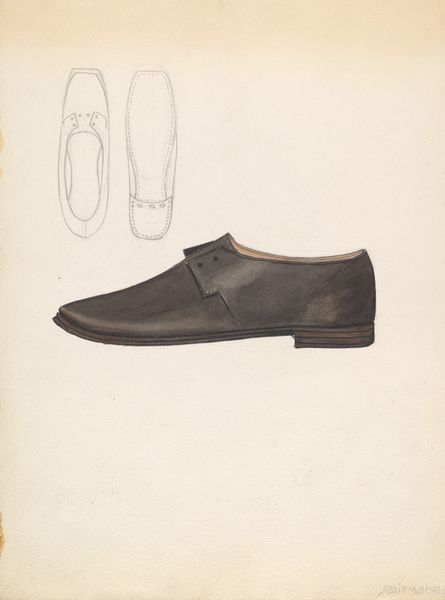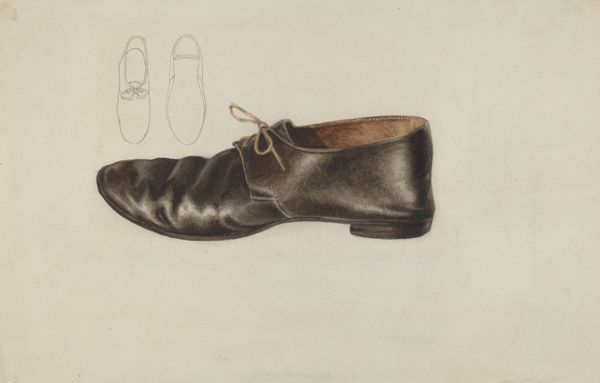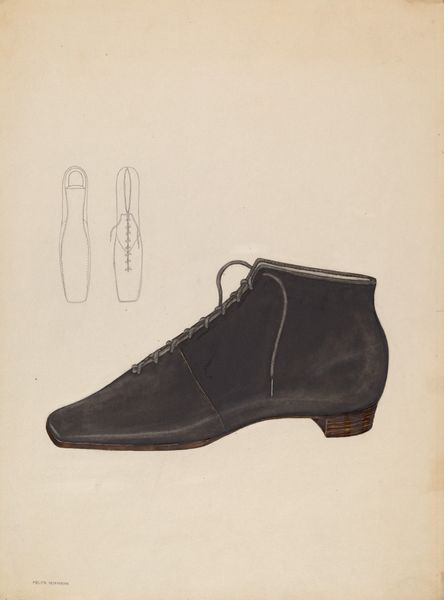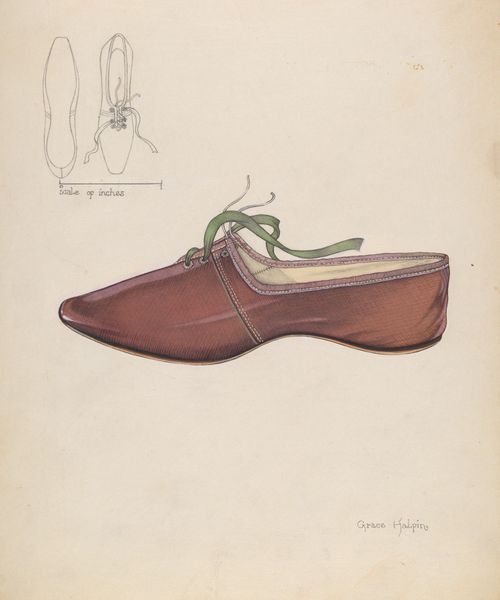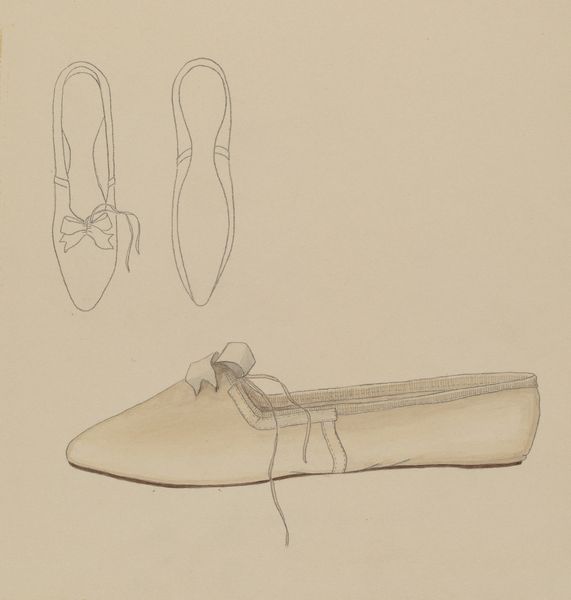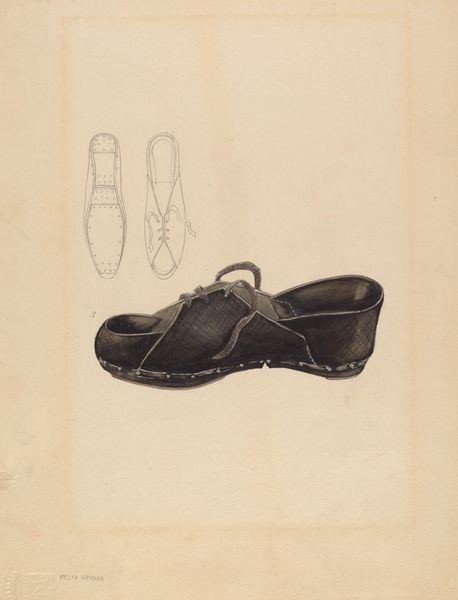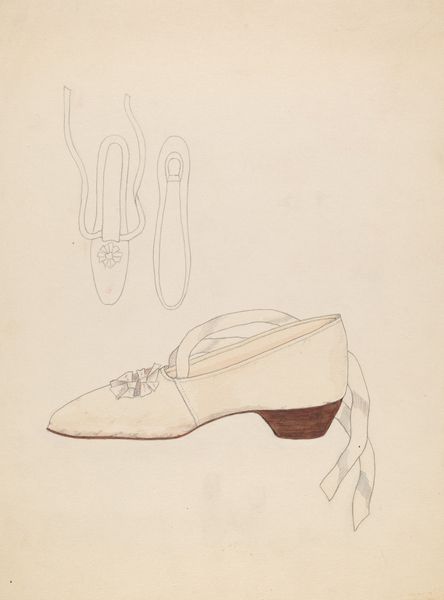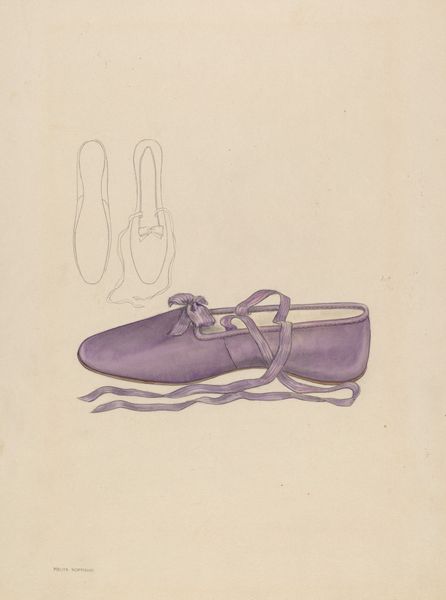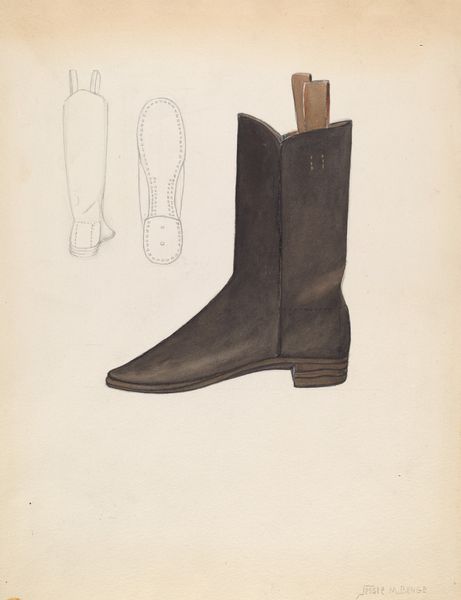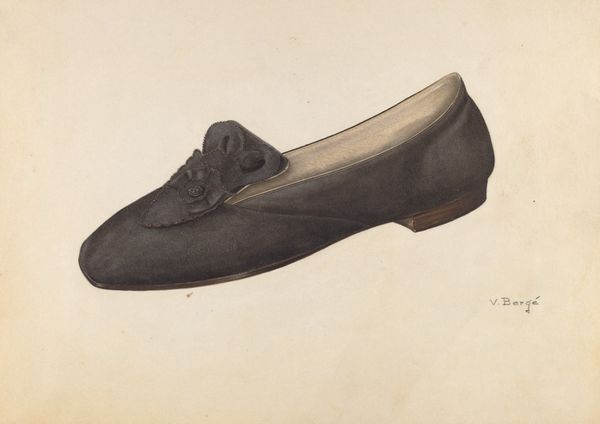
drawing
#
pencil drawn
#
drawing
#
amateur sketch
#
toned paper
#
light pencil work
#
pencil sketch
#
personal sketchbook
#
pencil drawing
#
sketchbook drawing
#
pencil work
#
shading experimentation
Dimensions: overall: 28 x 23.2 cm (11 x 9 1/8 in.)
Copyright: National Gallery of Art: CC0 1.0
Curator: Here we have "Man's Shoe," a drawing made circa 1936. It seems to be rendered in pencil on toned paper. Editor: It's remarkably gentle, almost melancholic. A worn shoe, sketched with such care. It makes you wonder about the man who wore it. Curator: Absolutely. There’s something intensely personal about a shoe, isn't there? I get the feeling this was a page in a sketchbook; note the less defined shoe outlines drawn up above, offering alternative views as experiments, and further down a finely worked finished object. One worn constantly. Look at the details the artist captures—the subtle gradations of tone achieved with careful shading, and a shoelace dangling from its eyelet. Editor: It certainly speaks volumes about labor and craft. Someone, somewhere, meticulously stitched that leather together, and another wore it until it softened and aged. It's like a material history lesson, almost a portrait of a working man embedded within this humble drawing. Do you know where the leather came from, what tannery tanned this to be what we see? Curator: Unfortunately, those details remain a mystery. But considering the time, it’s not unlikely these are Depression-era work boots. Perhaps the artist saw dignity in representing everyday objects used during difficult times. And who might have worn it, and to what purpose is another interesting consideration... A farmers boots worn to till, or a workers boots, maybe for industry. We don’t know. But we might never have otherwise looked twice at its material, design or story. Editor: You know, you're right. I tend to see the big picture but overlook the individual stitches, so to speak. This simple sketch has layers upon layers of human connection, from the maker to the wearer to the artist who observed and documented it. To what extent could we value a shoe so readily nowadays and how far removed are we from appreciating these historical representations of it? Curator: It is quite thought-provoking, isn't it? It prompts us to appreciate not only the beauty in the mundane, but also the intricate network of human lives connected through simple, everyday objects. Perhaps the next time I see a worn pair of shoes, I'll pause and consider the stories they could tell. Editor: And maybe I’ll trace the leather back to the tannery...
Comments
No comments
Be the first to comment and join the conversation on the ultimate creative platform.
